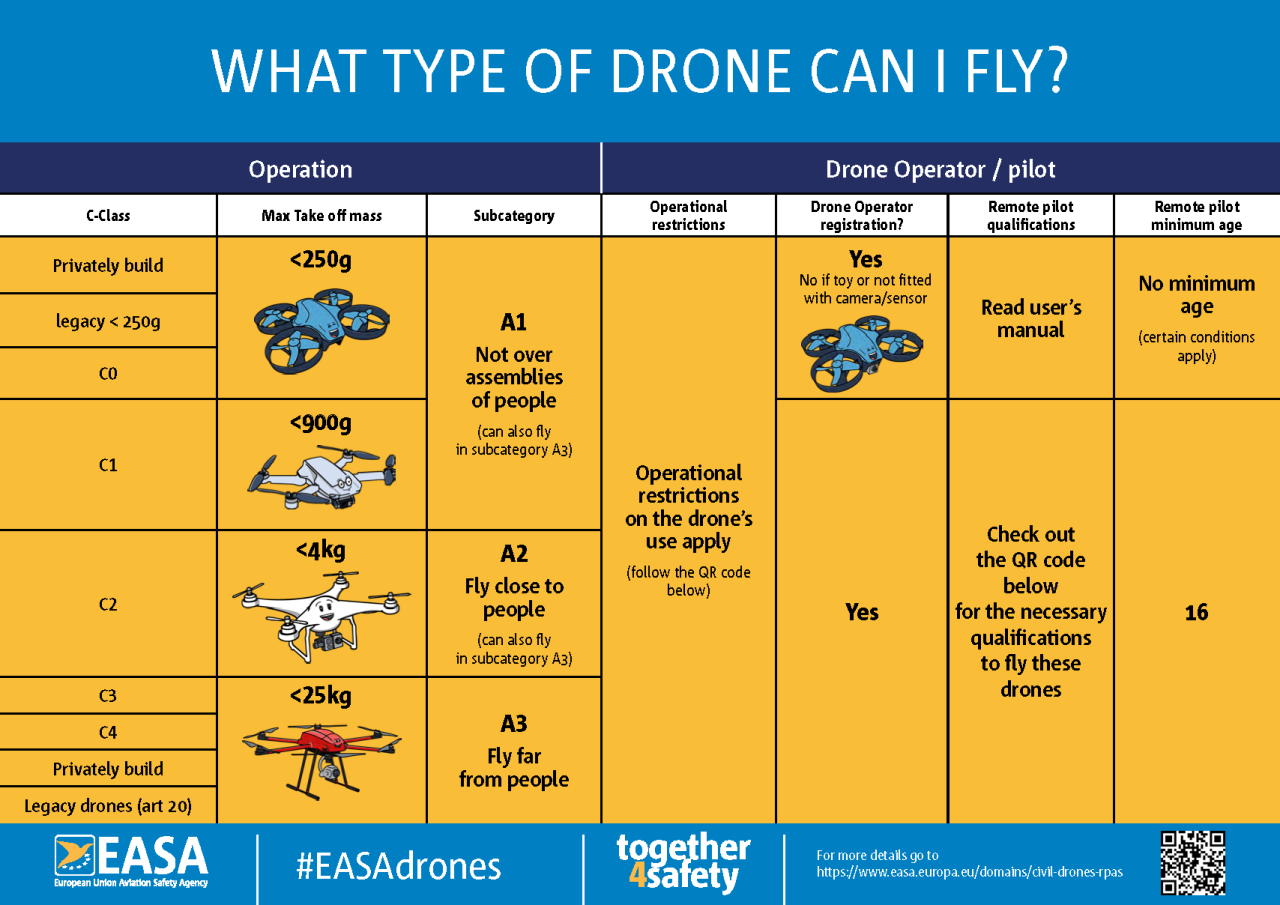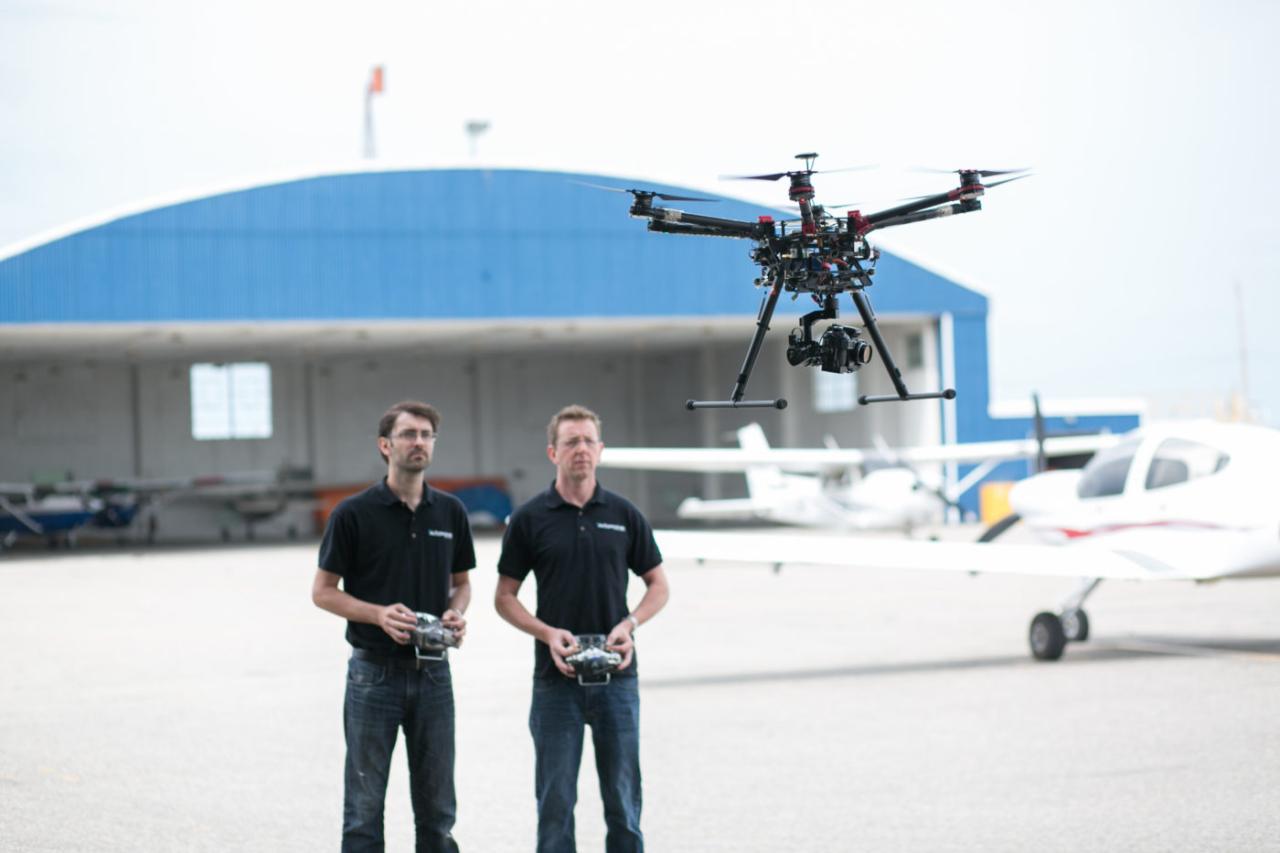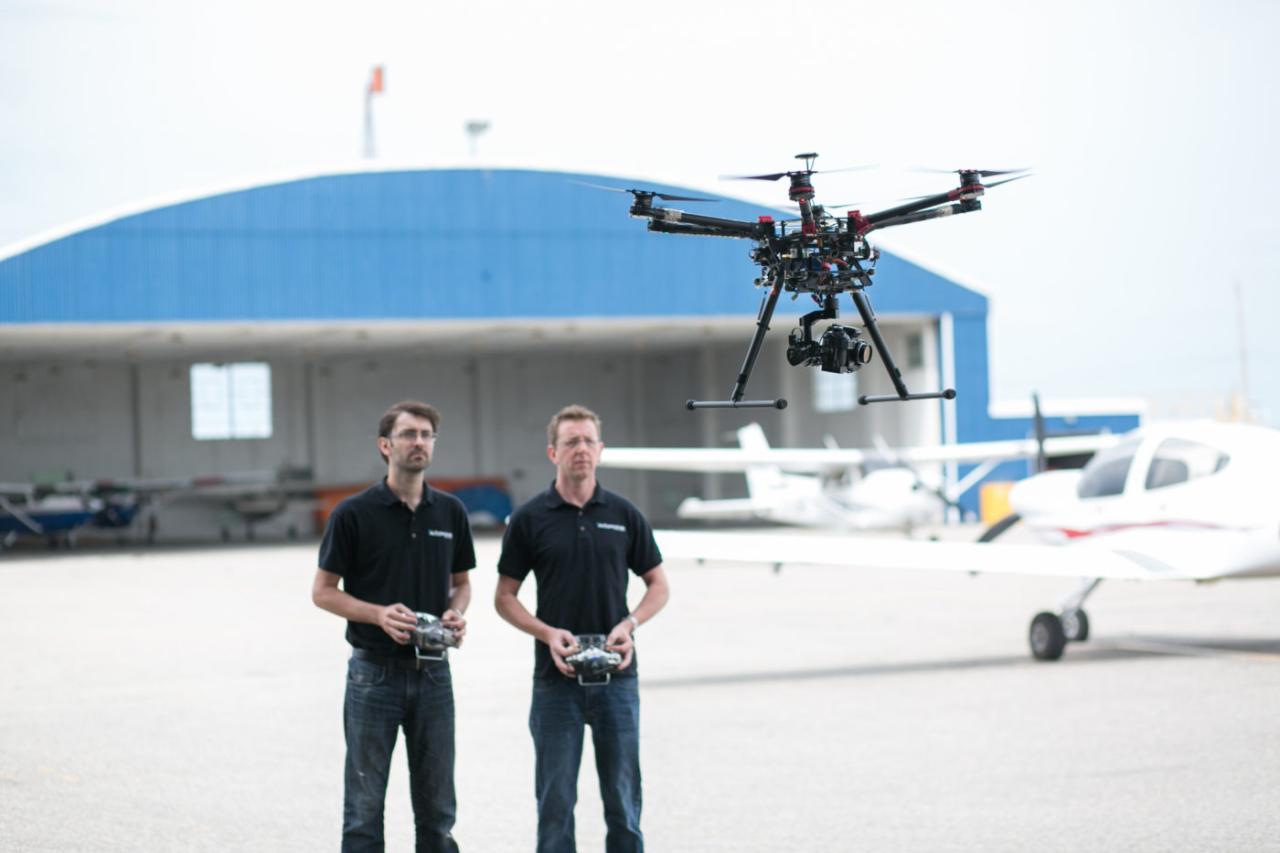New drone rules Canada are changing the game for both recreational and commercial drone pilots. This guide cuts through the complexity, offering a clear understanding of the updated regulations. We’ll cover everything from registration and licensing to operational restrictions and safety guidelines, ensuring you’re fully prepared to fly legally and responsibly.
Understanding these new rules is crucial, whether you’re a seasoned drone enthusiast or just starting out. Failure to comply can result in hefty fines and legal consequences. This guide aims to simplify the process, providing a straightforward explanation of the key changes and their implications for different user groups.
Overview of New Drone Regulations in Canada
Canada’s drone regulations have undergone significant updates, impacting both recreational and commercial drone users. These changes aim to improve safety and security while fostering responsible drone operation. This section summarizes the key alterations, identifies responsible governing bodies, and explains the implications for different user groups.
Key Changes in Drone Regulations

The updated regulations focus on increased safety protocols, clearer licensing requirements, and stricter enforcement. Key changes include more defined airspace restrictions, mandatory registration for many drones, and a more robust licensing system for commercial operations. These changes aim to prevent accidents and ensure responsible drone use across the country.
Governing Bodies
Transport Canada is the primary authority responsible for enforcing drone regulations in Canada. They work in conjunction with other agencies, such as local law enforcement, to ensure compliance and address violations.
Impact on Drone Users
Recreational users will need to register their drones and familiarize themselves with updated flight restrictions. Commercial operators face more stringent licensing requirements and operational limitations. These changes, while potentially more demanding, ultimately aim to create a safer airspace for everyone.
Comparison of Previous and Current Regulations
| Regulation Aspect | Previous Rule | Current Rule | Impact |
|---|---|---|---|
| Drone Registration | Not mandatory for all drones | Mandatory for drones exceeding a certain weight and/or features | Increased accountability and tracking of drone operations. |
| Licensing | Less stringent requirements for commercial operations | More rigorous licensing system with different classes based on drone size and operation type | Improved safety standards and professionalism in commercial drone operations. |
| Airspace Restrictions | Less defined restrictions near airports and sensitive areas | Clearer and more extensive restrictions around airports, military bases, and other sensitive locations | Enhanced safety around critical infrastructure and reduced risk of collisions. |
| Flight Altitudes | Less specific altitude limits | Stricter altitude limits and requirements for maintaining visual line of sight | Reduced risk of collisions with aircraft and improved overall safety. |
Drone Registration and Licensing Requirements
Understanding the registration and licensing processes is crucial for all drone operators. This section Artikels the steps involved, the different license types, and the consequences of non-compliance.
Drone Registration Process
Registering your drone in Canada typically involves creating an account on the Transport Canada website, providing information about your drone, and paying a registration fee. Once registered, you’ll receive a registration number that must be displayed on your drone.
Drone Licenses and Permits
Different licenses and permits are available depending on the type of drone operation. Recreational users generally do not require a specific license beyond registration, while commercial operators need to obtain appropriate licenses based on the complexity and nature of their operations. These licenses often involve demonstrating competency and adhering to specific safety standards.
Obtaining Necessary Documentation
- Create an account on the Transport Canada website.
- Provide drone information (make, model, serial number).
- Pay the registration fee.
- Receive and display your registration number.
- (For commercial operations) Apply for the appropriate license based on your operations.
Penalties for Non-Compliance
Operating a drone without proper registration or licensing can result in significant fines and potential legal repercussions. The severity of the penalty depends on the nature and extent of the violation.
Operational Restrictions and Flight Limitations
Understanding flight restrictions is essential for safe and legal drone operation. This section details the rules surrounding flight near sensitive areas, altitude limits, night flights, and operations in populated areas.
Flying Near Airports and Sensitive Areas
Drones are prohibited from flying within specific distances of airports, heliports, and other sensitive areas such as military bases and power plants. These restrictions are in place to prevent interference with air traffic and protect critical infrastructure. The exact distances vary depending on the location and type of airspace.
So, you’re looking into the new drone rules in Canada? It’s a bit of a maze, right? One thing to consider is how these rules affect specialized drones, like the awesome magura v5 sea drone , which opens up a whole new world of possibilities. Understanding the regulations is key before you take to the skies (or seas!), so make sure to check the Transport Canada website for the latest updates.
Failing to do so could lead to penalties!
Altitude and Distance Restrictions
Drone flights are typically restricted to a maximum altitude of 122 meters (400 feet) above ground level and must maintain visual line of sight. These limits ensure safety and prevent the drone from becoming a hazard to other aircraft or people.
Night Flights and Visual Observers
Night flights are generally prohibited unless specific exemptions are obtained. Visual observers may be required for certain flights, particularly in more challenging conditions or complex environments.
Drone Operation in Populated Areas and Over Private Property

Flying over populated areas and private property requires obtaining permission from the property owner and adhering to additional safety precautions. This ensures the privacy and safety of individuals on the ground.
Canada’s new drone rules are tightening up safety regulations, aiming to prevent accidents. Understanding these rules is crucial, especially considering incidents like the tragic fullerton plane crash , which highlights the potential consequences of irresponsible drone operation. These new regulations aim to improve airspace safety for everyone, so make sure you’re up to date on the latest guidelines before you fly.
Flowchart for Determining Legal Flight Zones
A flowchart would visually represent the decision-making process for determining legal flight zones, guiding users through a series of yes/no questions regarding proximity to airports, populated areas, and other restrictions, ultimately leading to a determination of whether a flight is legal or not. This would require a visual representation which is outside the scope of a plain text response.
Safety Guidelines and Best Practices: New Drone Rules Canada
Safe drone operation requires careful planning and adherence to best practices. This section Artikels essential safety procedures and equipment.
Safe Drone Operation Best Practices
Before each flight, perform thorough pre-flight checks, including battery levels, GPS signal strength, and overall drone functionality. Always maintain visual line of sight with your drone, and be aware of potential hazards such as obstacles and weather conditions. Develop and practice emergency procedures in case of malfunctions or unexpected events.
Importance of Visual Line of Sight

Maintaining visual line of sight is paramount to safe drone operation. This allows the operator to react quickly to unexpected situations and prevent accidents.
Operator Responsibility
Drone operators are responsible for the safe and legal operation of their drones and must be aware of potential risks and liabilities associated with drone operation.
Handling Malfunctions and Accidents
In case of malfunctions, follow established emergency procedures, prioritizing safety and minimizing potential damage or injury. Report any accidents or incidents to the appropriate authorities.
Canada’s new drone rules are pretty comprehensive, covering everything from registration to flight restrictions. To see how other countries are innovating, check out the impressive drone displays at the shanghai drone show 2027 ; it might give you ideas on how future Canadian regulations could evolve to accommodate technological advancements. Understanding these international trends helps us stay ahead of the curve when it comes to safe and responsible drone operation in Canada.
Essential Safety Equipment
- Spare batteries
- First-aid kit
- Repair kit
- Appropriate clothing for the weather conditions
- Visual observer (if required)
Penalties for Non-Compliance
Violating drone regulations can result in various penalties. This section Artikels the range of penalties and the appeals process.
Range of Penalties
Penalties for violating drone regulations can range from warnings and fines to legal repercussions, depending on the severity of the violation. The penalties aim to deter unsafe or illegal drone operations and maintain a safe airspace.
Appeals Process
There is a process for appealing penalties or enforcement actions, typically involving submitting a formal appeal to the relevant authorities within a specified timeframe.
Penalties for Various Violations
| Violation | Penalty | Potential Consequences |
|---|---|---|
| Unregistered drone operation | Fine | Further legal action, potential drone confiscation |
| Flying in restricted airspace | Significant fine | Legal action, potential flight restrictions |
| Unsafe flight practices | Fine, suspension of operating privileges | Legal action, potential jail time in severe cases |
Resources and Further Information
Numerous resources are available for drone operators seeking information on regulations and safe operation.
Official Websites and Resources
Transport Canada’s website provides comprehensive information on drone regulations, licensing, and safety guidelines. Other relevant resources may include aviation safety organizations and industry associations.
Contact Information for Relevant Agencies
Contact information for Transport Canada and other relevant agencies can be found on their respective websites.
Reporting Unsafe Drone Operation, New drone rules canada
Procedures for reporting unsafe drone operation or violations are typically Artikeld on the Transport Canada website, often involving online reporting forms or contacting local law enforcement.
Seeking Clarification on Regulations
Clarification on specific aspects of the regulations can often be sought through Transport Canada’s website, contact information, or through consultation with industry experts.
Impact on Different Drone User Groups
The new regulations have varying impacts on different drone user groups. This section compares the effects on recreational and commercial users and identifies potential solutions to address challenges.
Impact on Recreational vs. Commercial Users
Recreational users primarily face increased registration requirements and stricter flight limitations, while commercial operators must navigate more complex licensing processes and operational restrictions. Both groups face increased accountability and the need for enhanced safety awareness.
Challenges Faced by Different User Groups
Recreational users might struggle with understanding and complying with the more complex regulations, while commercial operators may face increased costs and administrative burdens associated with licensing and compliance. Both groups might need additional training and resources to fully adapt to the changes.
Solutions to Address Challenges
Increased public awareness campaigns, accessible online resources, and standardized training programs can help recreational users understand and comply with the new regulations. For commercial operators, streamlined licensing processes and reduced administrative burdens could facilitate compliance.
Impact on Various Industries
Industries utilizing drones, such as agriculture (precision spraying, crop monitoring), infrastructure inspection (bridge, pipeline inspections), and delivery services, face adjustments to their operations due to the new regulations. This might involve obtaining appropriate licenses, adhering to stricter operational procedures, and potentially increasing costs. However, the improved safety standards ultimately contribute to a more sustainable and responsible drone ecosystem in these sectors.
Wrap-Up
Navigating Canada’s new drone regulations can seem daunting, but with a little preparation, safe and legal drone operation is achievable. Remember to always prioritize safety, familiarize yourself with the specific rules applicable to your situation, and consult official resources for the most up-to-date information. Happy flying!
FAQ Overview
What’s the maximum weight drone requiring registration?
Generally, drones weighing 250 grams or more require registration.
Can I fly my drone at night?
Night flights are generally restricted unless you have specific exemptions or permissions.
Where can I find a map of restricted airspace?
Navigation Canada’s website provides tools and resources to identify restricted airspace.
What happens if I accidentally damage someone’s property with my drone?
You are liable for any damages caused by your drone; insurance is strongly recommended.
Do I need a pilot license for commercial drone operations?
Commercial drone operations often require specific certifications and licenses depending on the type of work being performed.
